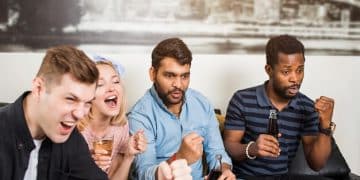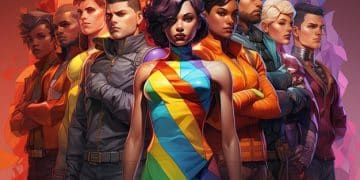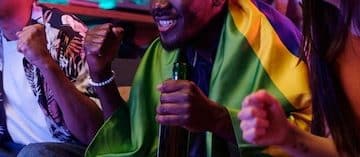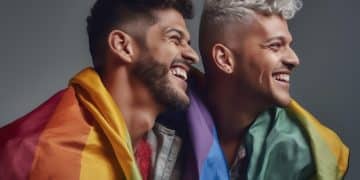LGBT Representation in LoL Esports: EU vs. US Teams
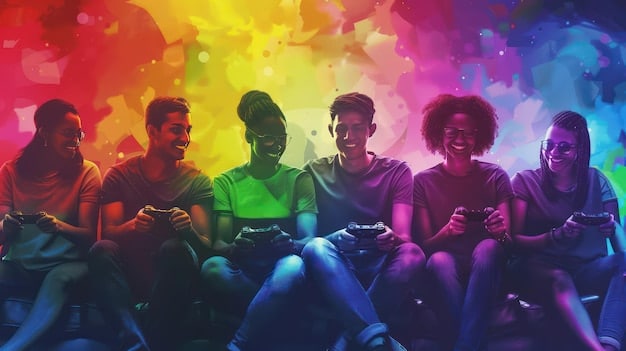
A nuanced look reveals that while both regions demonstrate growing support, European League of Legends esports teams often showcase more visible and organizationally integrated LGBT representation compared to their US counterparts, where individual player advocacy usually takes precedence.
The landscape of professional esports is a vibrant, rapidly evolving world, and the discussion around diversity and inclusion, particularly regarding LGBT representation, has gained significant traction. This article aims to explore What are the Key Differences Between LGBT Representation in European and US League of Legends Esports Teams?, offering a comprehensive analysis of how these two major regions approach, support, and showcase their LGBT players, staff, and fan communities. By examining the distinct cultural, societal, and corporate influences, we can better understand the unique challenges and triumphs faced in promoting inclusivity within the competitive gaming scene on both sides of the Atlantic.
Cultural Context and Societal Attitudes Shaping Inclusivity
The approach to LGBT representation in esports is deeply embedded in the broader cultural and societal attitudes prevalent in Europe and the United States. While both regions have made significant strides in LGBT rights, the nuances in public perception and legal frameworks can lead to differing environments within the esports ecosystem. Europe, with its diverse array of nations, presents a complex tapestry of acceptance and progress, ranging from highly progressive Western European countries to more conservative Eastern European states. This heterogeneity influences how easily and visibly LGBT individuals are integrated into teams and how organizations frame their inclusivity initiatives.
In many European countries, particularly those in the west, there is a strong emphasis on social welfare, human rights, and anti-discrimination laws that often extend to LGBT individuals. This proactive stance from governments and institutions can foster a more inherently inclusive environment, where discussions around sexuality and gender identity are more normalized. For instance, laws protecting against discrimination in employment often provide a solid foundation for LGBT individuals in the workplace, including professional esports settings. This doesn’t mean prejudice is absent, but the legal and social backbone is often stronger in advocating for rights. The perception of identity politics and social issues can also differ, with some European societies more accustomed to public discussions about various minority groups.
Conversely, the United States, while often seen as a beacon of individual freedoms, exhibits a different set of dynamics. Acceptance of LGBT individuals varies significantly across states, influenced by political leanings, religious beliefs, and local cultural norms. While federal protections have expanded, the patchwork of state laws means that experiences can differ drastically depending on where a team is based or where a player resides. The cultural discourse in the US often emphasizes individual narratives and expression. This can lead to situations where individual players become powerful advocates for LGBT rights, while organizational support might be more performative or less deeply integrated into the company culture compared to some European counterparts.
The Role of National Identity in Europe
Europe’s rich mosaic of national identities plays a crucial role. A Polish player’s experience might differ significantly from a German player’s, even within the same European league.
- Varying Legal Protections: Some nations have robust anti-discrimination laws, while others lag behind.
- Public Sentiment: General public acceptance of LGBT individuals can range from widespread to niche.
- Media Representation: Local media often reflects these national attitudes, influencing public discourse.
US: Individualism vs. Institutional Support
In the US, the narrative often focuses on the individual’s journey and advocacy, which can be both empowering and isolating.
- Player-Led Initiatives: Many impactful strides come from individual players courageously sharing their stories.
- Corporate Hesitation: Some organizations may be cautious about taking strong stances on social issues to avoid alienating portions of their diverse fanbase.
- Fragmented Legal Landscape: Varying state laws can complicate consistent policy implementation across a national league.
Ultimately, while both regions are progressing, the underlying cultural and societal contexts shape not only the visibility of LGBT representation but also the depth and consistency of the support offered. Understanding these foundational differences is key to appreciating the distinct pathways of inclusivity in European and US League of Legends esports.
Organizational Policies and Team Culture: A Deeper Dive
Exploring the organizational policies and team cultures within League of Legends esports reveals divergent approaches to LGBT representation between European and US teams. These differences often reflect the regional socio-political climates and corporate values. In Europe, there is a discernible trend towards more formalized and integrated diversity and inclusion (D&I) initiatives, sometimes driven by broader European Union directives or national frameworks that emphasize human rights and equality. European teams are more likely to implement explicit non-discrimination clauses in contracts and internal codes of conduct, extending protections to LGBT individuals. This often translates into more visible support, such as participation in Pride events as an organization, or public statements advocating for LGBT rights.
However, the depth of these policies can vary significantly. While a French or German team might have comprehensive frameworks, an organization based in a less progressive Central or Eastern European nation might adopt a more cautious stance, possibly limiting their public displays of support to avoid backlash from local fanbases or stakeholders. Yet, the overall tendency leans towards a structured approach, aiming to create environments where all players and staff feel safe and respected due to formalized internal processes. This can empower LGBT individuals within the organization, even if public visibility remains selectively calibrated.
In the United States, the landscape for organizational policies and team culture regarding LGBT representation is somewhat different, often driven more by corporate social responsibility initiatives and individual team leadership rather than a uniform regional standard. While many US-based esports organizations are progressive, particularly those located in more liberal cities, the emphasis might be more on fostering an “inclusive vibe” rather than strict, formalized policy dictated by external mandates. This allows for flexibility and innovation in how teams approach D&I, but it can also lead to inconsistencies. Some teams might have robust internal training and support systems, while others might rely on the individual advocacy of their players to signal inclusivity.
Formalized D&I Initiatives in Europe
Many European teams integrate D&I into their core values, driven by societal expectations and legal frameworks.
- Explicit Non-Discrimination Clauses: Common in employment contracts and codes of conduct.
- Organizational Pride Participation: Teams often participate formally in Pride parades and related events.
- Internal Training Programs: Some organizations provide training on unconscious bias and LGBT sensitivity.
US: Corporate Social Responsibility and Individual Leadership
In the US, initiatives often stem from the top-down commitment of ownership or the bottom-up advocacy of influential figures.
- CEO-Led Initiatives: Leaders personally committed to diversity can drive significant change.
- Focus on “Safe Spaces”: Creating general environments where all feel welcome, sometimes without explicit LGBT specificity.
- Event-Based Support: Teams might engage in specific campaigns or events during Pride month.
The impact of these policies and cultures is profound. European teams, with their generally more formalized approach, might provide a sense of institutional security for LGBT individuals. US teams, while sometimes more dynamic in their individual expressions of support, might place a greater burden on individual players to advocate for themselves within a less structurally uniform system. Both approaches have merits and challenges, ultimately shaping the lived experiences of LGBT individuals within these competitive environments.
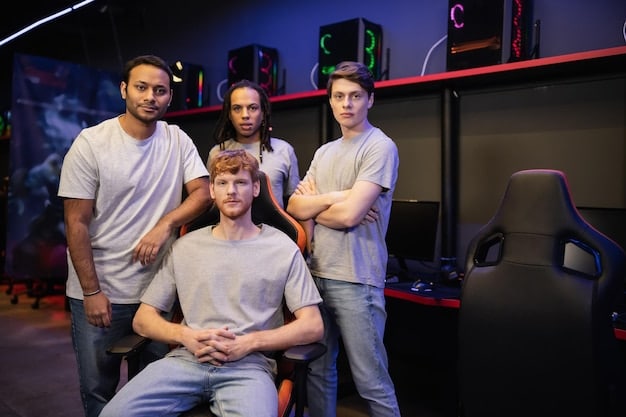
Player Advocacy and Visibility: Leading the Change
Player advocacy and visibility are critical components of LGBT representation in esports, and here too, we can observe distinct patterns between European and US League of Legends teams. In Europe, while individual players certainly take strong stances, their advocacy is often perceived as part of a collective, broader movement supported to varying degrees by their organizations. European players might feel more emboldened to speak out on LGBT issues, knowing that there is a societal and, in some cases, an organizational safety net. When a European player comes out or advocates for LGBT rights, it often integrates into a narrative of collective progress and shared values, which might see a team or league amplify their message.
The visibility of LGBT players in Europe can sometimes be more subtly integrated into standard media narratives. News outlets and team channels might highlight a player’s identity as part of their overall story, rather than making it the sole focus. This can normalize LGBT identities within the esports discourse. However, this isn’t universally true; in regions of Europe where public sentiment is less accepting, players might still face significant personal and professional risks by being openly LGBT. Yet, the prevailing atmosphere in major European esports hubs tends to be one of greater acceptance, allowing for more prominent and less sensationalized LGBT visibility from players.
In the United States, player advocacy for LGBT rights often takes on a more prominent, individualistic, and sometimes heroic dimension. Due to the emphasis on individual expression and the varying levels of societal acceptance across the US, a player coming out or actively campaigning for LGBT rights can become a national story, potentially carrying more weight and generating more discussion. These players often become powerful symbols and role models, shouldering a significant portion of the advocacy burden. Their visibility can be immense, inspiring many, but it can also expose them to greater scrutiny and potential backlash, especially if organizational support is not robust or consistent.
European Player Experiences: Integrated Narratives
European players often find their LGBT identities woven into conversations about diversity and inclusivity, with broader organizational backing.
- Collective Support Networks: Players benefit from existing D&I structures within their teams or regional leagues.
- Normalized Discussions: LGBT identities are often discussed as part of a broader spectrum of diversity.
- Less Isolated Advocacy: Individual players feel less alone in their advocacy efforts due to a supportive environment.
US Player Experiences: Pioneering and Individual Impact
US players, by contrast, frequently lead the charge, becoming prominent figures in the fight for LGBT acceptance within esports.
- High-Impact Role Models: Openly LGBT players often become highly visible and influential advocates.
- Personal Risk and Reward: While inspiring, this can also expose players to personal attacks and the pressure of representation.
- Catalytic Moments: A player’s public coming out can spark widespread discussion and change within the US scene.
Ultimately, while both regions boast courageous LGBT players and allies, the context in which they advocate and achieve visibility differs. European players might experience a more integrated form of support, while US players often carve out a path of individual pioneering, creating significant impact but sometimes facing greater isolation as they navigate the complexities of identity in a highly public arena.
Fanbase Engagement and Community Support
Fanbase engagement and community support for LGBT representation also demonstrate distinct characteristics when comparing European and US League of Legends esports teams. In Europe, fan communities often mirror the general societal attitudes, where there’s a strong, albeit varied, undercurrent of progressive values in many regions. European fanbases, particularly in Western Europe, tend to be more vocal and organized in their support for LGBT inclusion, often participating in fan-led initiatives that align with broader social justice movements. There’s a sense that supporting LGBT rights is part of a larger responsibility towards inclusivity in society as a whole.
This can manifest in fan groups creating explicit LGBT-inclusive spaces, organizing watch parties during Pride events, or even directly engaging with teams and leagues to advocate for better representation. The diversity of European countries means that these fan engagement efforts might vary regionally, but the overall sentiment among a significant portion of the fanbase is often one of proactive support. Furthermore, the strong football (soccer) fan culture in Europe, which has increasingly grappled with issues of discrimination and inclusivity, might influence how esports fans perceive and engage with similar discussions, sometimes leading to more organized and passionate advocacy.
In the United States, fanbase engagement with LGBT representation is often passionate and highly visible, yet it can also be more polarized. While there are incredibly dedicated and vocal LGBT-inclusive fan communities, there can also be significant resistance or ambivalence from other segments of the fanbase, reflecting the broader cultural divisions in the country. US fans who support LGBT inclusion might do so with intense commitment, often forming strong online communities and using social media to amplify messages of diversity. These groups are excellent at creating safe spaces and advocating for change.
European Community Dynamics: Collective and Integrated
European fans often embody a collective approach to supporting LGBT representation, deeply integrated into broader societal trends.
- Grassroots Movements: Fan-led initiatives frequently align with pan-European social justice efforts.
- Regional Nuances: Support levels can differ, but a strong progressive core exists in many fanbases.
- Influence from Traditional Sports: Lessons from traditional sports’ inclusivity efforts sometimes transfer to esports fandom.
US Community Dynamics: Vocal and Sometimes Polarized
US fans exhibit highly vocal support, but also face the challenge of a more divided response to LGBT issues.
- Strong Online Activism: US fans leverage social media effectively to advocate and create safe spaces.
- Polarized Reactions: While many are supportive, others might express indifference or opposition based on cultural beliefs.
- Individual Story Emphasis: Fan engagement often rallies around the stories of openly LGBT players or personalities.
The impact of fanbase engagement is crucial for both regions. Supportive fan communities can provide invaluable encouragement to LGBT players and staff, creating a more welcoming environment both online and offline. Conversely, hostile or indifferent fan reactions can create significant barriers to comfortable representation. Therefore, understanding these regional differences in fanbase dynamics helps complete the picture of LGBT representation in European and US League of Legends esports.
Challenges and Future Outlook for LGBT Representation
Both European and US League of Legends esports face unique challenges and promising future outlooks regarding LGBT representation. In Europe, one significant challenge is overcoming the disparities in acceptance and legal protections across different countries. While Western Europe often leads the way, regions in Eastern Europe may still grapple with more conservative viewpoints and less robust anti-discrimination laws. This means that a European organization, even with the best intentions, might face internal inconsistencies or external pressures depending on the national origin of its players or the location of its events. Ensuring consistent support and messaging across a multi-national league requires continuous effort and sensitivity to diverse cultural contexts.
Another challenge in Europe is moving beyond performative activism to genuine, deeply embedded inclusivity. With strong institutional backbones for D&I, there’s always a risk that policies become mere checkboxes rather than living aspects of team culture. The future outlook, however, is generally positive. As younger, more diverse generations enter professional esports, attitudes are likely to continue evolving. Increased cross-regional collaboration and shared best practices, potentially facilitated by broader European initiatives, could help standardize and elevate LGBT inclusion efforts across the continent. Greater media visibility of LGBT players and stories will also play a crucial role in normalizing these identities within the fiercely competitive world of esports.
In the United States, a primary challenge is navigating the fragmented socio-political landscape. The strong individualistic culture, while enabling powerful player advocacy, can sometimes leave organizations less unified in their approach to LGBT representation. Teams might struggle with how to take a consistent stance that resonates with fans across all states, or how to protect players from backlash originating from less tolerant regions. The “culture wars” prevalent in some parts of society can spill over into esports, making it difficult for organizations to take unequivocal positions without fear of alienating a segment of their audience.
European Challenges: Bridging Regional Divides
Ensuring uniform support across diverse European nations remains a key hurdle.
- Variable Legal Environments: Different countries offer varying degrees of protection and acceptance.
- Avoiding Tokenism: The need to ensure D&I policies translate into genuine cultural shifts, not just surface-level gestures.
- Language and Cultural Barriers: Communicating effectively across diverse linguistic and cultural backgrounds.
US Challenges: Unifying a Diverse Landscape
The US scene contends with internal divisions and the pressure of individual advocacy.
- Political Polarization: Social issues are often politicized, impacting how teams can engage.
- Protection Against Backlash: Shielding LGBT players from online harassment and negative sentiment.
- Consistency of Support: Ensuring all players feel equally supported regardless of team or location.
The future outlook for the US, despite these challenges, is also optimistic. The increasing visibility of LGBT pro players and streamers continues to inspire, creating a groundswell of support from younger generations. As esports grows in mainstream popularity, there will likely be greater pressure for all organizations to adopt comprehensive and authentic D&I strategies. The continued advocacy of individual players, coupled with growing corporate awareness, suggests a trajectory towards more inclusive and welcoming environments, albeit potentially achieved through a different path than in Europe. Both regions are on a journey, and while their paths diverge, the shared goal of full LGBT inclusion in esports remains a powerful driving force.
Media Representation and Mainstream Acceptance
The way media represents LGBT individuals in League of Legends esports significantly shapes public perception and mainstream acceptance. In Europe, media coverage tends to be a bit more nuanced, often integrating the LGBT identities of players and staff into broader profiles without necessarily sensationalizing them. European esports media, particularly those with a pan-European reach, often highlight diversity as a core tenet of the esports community itself. When an LGBT player or narrative emerges, it’s frequently discussed within the context of fair play, inclusivity, and the evolving nature of professional sports, reflecting a societal trend towards greater acceptance in many European nations.
For instance, an interview with an openly gay player in a prominent European esports publication might focus equally on their competitive performance and their journey as an LGBT individual, presenting a holistic view. This approach helps to normalize LGBT identities, making them an integrated part of the esports tapestry rather than a standalone “issue.” There’s a tendency to weave these stories into the fabric of human interest pieces that reflect the diversity of the competitive scene. However, this is not a monolithic experience, and media in more conservative regions of Europe might still struggle to provide equally balanced or supportive coverage, reflecting local biases.
In the United States, media representation of LGBT individuals in esports often leans towards impactful, headline-driven narratives, particularly when an individual comes out or takes a strong public stance. This can be incredibly powerful, creating viral moments and catapulting LGBT issues into national discussion. US esports media might highlight the bravery or pioneering spirit of an openly LGBT player, inadvertently placing a significant burden of representation on that individual. While this generates immense visibility and can be a catalyst for change, it can also lead to the “othering” of LGBT identities, making them stand out rather than blend in seamlessly.
European Media’s Integrated Approach
European media often portrays LGBT identities as part of a diverse whole, promoting acceptance through normalization.
- Holistic Player Profiles: Focus on skill and personal story, including LGBT identity as one aspect.
- Emphasis on Inclusivity: Media narratives frequently highlight esports as an inclusive space.
- Regional Media Differences: Coverage quality can vary based on national progressive levels.
US Media’s High-Impact Narratives
US media tends to create impactful stories around individual LGBT journeys, often leading to broad public attention.
- Spotlighting Role Models: Publicizing the courage of openly LGBT players and their advocacy.
- Catalytic News Cycles: Events like a player coming out often lead to significant media buzz.
- Risk of “Othering”: Sometimes, the focus on LGBT identity can inadvertently make it seem exceptional rather than normal.
The impact of media representation is undeniable. Media narratives can either reinforce stereotypes or break them down, influencing both the broader public and aspiring players. As both regions continue to evolve, the goal remains to achieve a form of media representation that is both celebratory of diversity and normalized, ensuring that LGBT individuals are seen as integral and valued members of the League of Legends esports community, irrespective of their geographic location.
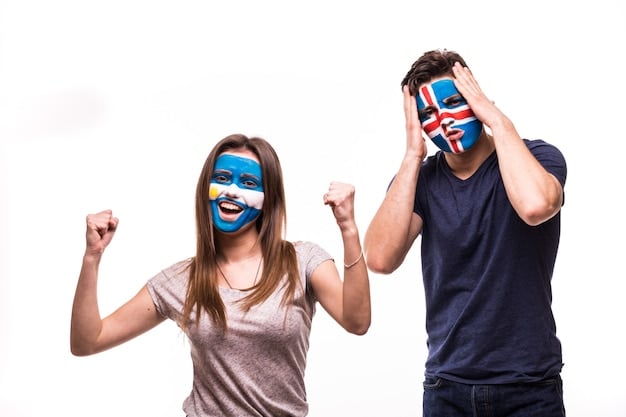
Economic Factors and Sponsorship in LGBT Inclusion
Economic factors and sponsorship play a substantial role in influencing LGBT representation within both European and US League of Legends esports. In Europe, while teams and leagues operate in a competitive market, there’s often a perception that aligning with progressive social values, including LGBT inclusion, can attract specific demographics of fans and sponsors. Companies in many European nations, particularly multinational corporations, are increasingly emphasizing their commitment to diversity as part of their corporate social responsibility strategies. This can translate into sponsorship deals that prioritize partners who demonstrate genuine inclusivity.
For instance, a European esports team actively participating in Pride events or implementing strong D&I policies might find themselves more appealing to sponsors who value a progressive brand image. The economic incentive here is often about brand alignment and tapping into a socially conscious consumer base. However, this also means that teams must carefully navigate their regional markets;
a sponsor might be highly supportive in one country but cautious in another. The trend, however, is towards leveraging inclusivity as a positive brand differentiator, making economic arguments for LGBT representation increasingly compelling in many European contexts.
In the United States, the economic landscape for LGBT inclusion is characterized by both significant opportunities and heightened commercial pressures. The US market is vast and diverse, and many brands recognize the immense purchasing power and loyalty of the LGBT community and its allies. Consequently, there’s a strong economic incentive for US esports organizations to demonstrate LGBT support to attract corporate sponsorships and partnerships. “Pinkwashing,” or superficial displays of support without genuine commitment, can be a risk, as companies seek to capitalize on social trends.
European Economic Incentives: Values-Driven Branding
European teams often find that genuine LGBT inclusion enhances brand value and attracts socially responsible partners.
- Corporate Social Responsibility: Sponsors seek teams aligned with their D&I values.
- Market Differentiation: Inclusivity helps teams stand out to a segment of the audience and corporate partners.
- Long-term Brand Building: Investing in D&I is seen as building a resilient and ethical brand.
US Economic Incentives: Diverse Market Appeal and Commercialization
US teams often engage in LGBT inclusion driven by the commercial appeal to diverse consumer groups and sponsorship opportunities.
- Targeting the “Pink Dollar”: Recognizing the economic power of the LGBT community.
- Sponsorship Magnet: Brands with D&I initiatives are more likely to support inclusive teams.
- Navigating Commercialization: Balancing genuine support with marketing opportunities to avoid tokenism.
The economic considerations mean that teams, regardless of region, are increasingly aware that neglecting LGBT inclusion can be a financial detriment. Conversely, authentic and consistent support can open doors to valuable partnerships and expand their fanbase. While Europe might lean towards values-driven branding, and the US towards diverse market appeal, both regions are realizing that inclusivity is not just a moral imperative but also a sound business strategy in the modern esports ecosystem.
The Impact of League Structure and Governance
The structure and governance of League of Legends esports leagues in Europe (LEC) and the US (LCS) also play a significant role in shaping LGBT representation, influencing how policies are made and implemented. In Europe, the LEC operates under a framework that often mirrors the principles of the broader European Union, emphasizing cooperation and shared values across member nations. This centralized but diverse approach means that initiatives for diversity and inclusion, including LGBT representation, can be introduced at a league-wide level, potentially creating a more uniform standard for all franchised teams.
For instance, if the LEC leadership decides to implement a league-wide diversity training program or a policy supporting LGBT players, it has the authority to encourage or even mandate its adoption by all participating teams. This top-down approach, while not always perfect in its execution across vastly different cultural landscapes, provides a potential mechanism for consistent progress. The multi-national nature of European esports also means that league governance must often consider a wider range of cultural sensitivities, which can sometimes slow down rapid policy changes but can also lead to more thoroughly considered and robust frameworks when agreement is reached.
In contrast, the LCS in the US, while also a franchised league, operates within a more homogeneous national context, yet faces a different set of governance challenges. The league’s primary focus often revolves around fostering player talent, promoting American esports within a global context, and navigating the unique commercial pressures of the US market. While Riot Games, the developer and operator of both leagues, has its own global D&I initiatives, the specific implementation within the LCS might be more influenced by the collective will of the team owners and the prevailing corporate culture in US sports.
European League Governance: Unified but Diverse
The LEC’s structure allows for league-wide D&I initiatives, balancing unity with national diversity.
- Centralized Policy Potential: League-level mandates can foster consistent LGBT-inclusive practices.
- Cross-National Alignment: Governance considers and adapts to varying cultural norms across Europe.
- Slower, but Deeper Adoption: Policy changes might take time but often aim for comprehensive implementation.
US League Governance: Corporate Drive and Team Autonomy
The LCS structure often means D&I initiatives are influenced by Riot’s global vision and individual team owners’ approaches.
- Riot Games’ Global Influence: While league-specific, LCS benefits from Riot’s overarching D&I goals.
- Team Owner Input: Decisions can be significantly shaped by the collective or individual attitudes of franchised teams.
- Commercial Imperatives: Governance might heavily weigh the commercial implications of D&I policies.
Ultimately, both league structures present opportunities and obstacles for LGBT representation. The European model might offer a pathway for more standardized and integrated approaches, leveraging a broader regional commitment to human rights. The US model, while potentially allowing for stronger individual team leadership on D&I, might also lead to more varied and less consistent outcomes across the league, dependent on the individual commitments of its constituent teams. Regardless, the governance of these leagues will continue to play a pivotal role in shaping the future of LGBT inclusion in League of Legends esports.
| Key Point | Brief Description |
|---|---|
| 🇪🇺 Cultural Nuances | EU’s diverse nations reflect varied LGBT acceptance, influencing team policies and fan engagement differently across the continent. |
| 🇺🇸 Individual Advocacy | US often sees more prominent individual player advocacy, becoming significant role models amidst varied state-level acceptance. |
| 🤝 Organizational Policies | EU favors formalized D&I strategies, while US approaches often blend corporate responsibility with team-specific initiatives. |
| 💰 Economic & Media Impact | Both regions leverage economic incentives for inclusion, with EU focusing on values and US on market appeal. Media representation varies from holistic to headline-driven. |
Frequently Asked Questions About LGBT Representation in LoL Esports
While there isn’t definitive quantifiable data suggesting significantly more openly LGBT players in one region over the other, European esports climates, particularly in Western Europe, often foster environments where coming out might feel safer due to stronger societal and legal protections. US players who come out often gain immense individual visibility and advocacy roles.
European organizations tend to integrate more formalized D&I policies, sometimes influenced by EU directives and national laws, including explicit non-discrimination clauses. US organizations often rely on corporate social responsibility and individual team leadership, leading to more varied and less uniformly applied internal D&I initiatives.
European fans often engage in more collective, grassroots LGBT support, mirroring broader social justice movements. US fan engagement is often passionate and highly visible, sometimes rallying around individual player stories, but can also be more polarized due to regional cultural divisions.
Both regions see economic incentives for LGBT inclusion. European sponsors often align with “values-driven branding” and corporate social responsibility. US sponsors are keenly aware of the diverse market appeal and purchasing power of the LGBT community, sometimes leading to more direct commercialization of inclusivity efforts.
The LEC’s multi-national framework can facilitate league-wide D&I policies, aiming for consistent standards across Europe. The LCS, within a more homogeneous national context, might see D&I initiatives influenced by Riot’s global vision and the collective will of team owners, potentially leading to more varied implementation across teams.
Conclusion
In conclusion, understanding What are the Key Differences Between LGBT Representation in European and US League of Legends Esports Teams? reveals a complex interplay of cultural, societal, organizational, and economic factors. While both regions are making strides towards greater inclusivity, their paths often diverge based on foundational differences. Europe frequently benefits from a more formalized, institutionally driven approach to diversity, often reflecting broader societal protections and a collective ethos. This can foster integrated narratives and provide a sense of security for LGBT individuals. The US, conversely, often showcases powerful individual advocacy, where players become significant role models, though this can sometimes place a greater burden of representation on them within a more culturally fragmented landscape. Both approaches have their strengths, contributing uniquely to the evolving narrative of LGBT inclusion in esports. As the industry matures, the continued dialogue and sharing of best practices between these two influential regions will be crucial in building a truly global and welcoming environment for all.
